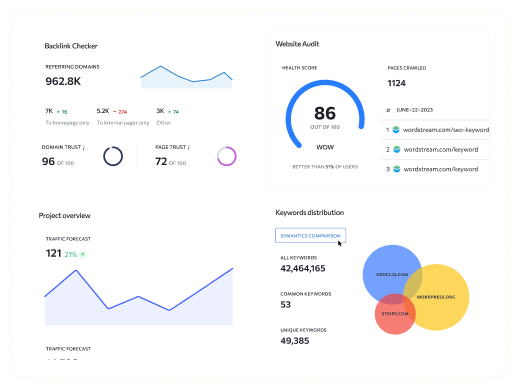In the fast-paced world of Software as a Service (SaaS), having a well-structured marketing plan is essential for success. One effective tool to organize your marketing strategy is the Gantt chart. Here’s a comprehensive guide on how to build a SaaS marketing plan using Gantt charts:
1. Define Your Goals:
Start by clearly defining your marketing objectives. Whether it’s increasing brand awareness, generating leads, or boosting sales, make sure your goals are specific, measurable, achievable, relevant, and time-bound (SMART).
2. Identify Your Target Audience:
Understand your target market and their needs. Research their demographics, behaviours, pain points, and preferences. This information will help tailor your marketing efforts and reach the right audience effectively.
3. Conduct Competitor Analysis:
Analyze your competitors to identify their strengths, weaknesses, strategies, and positioning. This insight will enable you to differentiate your SaaS product and develop competitive advantages.
4. Choose Marketing Channels:
Select the most suitable marketing channels to reach your target audience. This could include content marketing, social media, email marketing, paid advertising, SEO, influencer marketing, and more. Each channel should align with your goals and target audience.
5. Develop a Content Strategy:
Create valuable and relevant content to engage your audience and drive conversions. Plan your content calendar with topics, formats, distribution channels, and publishing dates. Content types may include blog posts, whitepapers, case studies, videos, webinars, and podcasts.
6. Create a Gantt Chart:
Now, it’s time to build your Gantt chart. Use a project management tool or spreadsheet to map out your marketing plan timeline. Break down tasks, assign responsibilities, set deadlines, and establish dependencies. This visual representation will help keep your team aligned and on track.
7. Execute Your Plan:
Implement your marketing activities according to the schedule outlined in your Gantt chart. Monitor progress, track performance metrics, and adjust strategies as needed to optimize results.
8. Measure and Analyze Results:
Regularly evaluate the effectiveness of your marketing efforts against your goals. Use analytics tools to measure key performance indicators (KPIs) such as website traffic, conversion rates, customer acquisition cost (CAC), customer lifetime value (CLV), and return on investment (ROI). Identify successes, areas for improvement, and growth opportunities.
Frequently Asked Questions (FAQs):
Q1. What is a Gantt chart?
A Gantt chart is a visual project management tool that displays tasks, timelines, and dependencies in a horizontal bar chart format. It helps teams plan, organize, and track progress throughout a project’s lifecycle.
Q2. Why use a Gantt chart for SaaS marketing?
Gantt charts provide a clear overview of your marketing plan, including task assignments, deadlines, and milestones. They facilitate better communication, coordination, and accountability among team members, leading to improved efficiency and productivity.
Q3. How do I create a Gantt chart for my SaaS marketing plan?
You can create a Gantt chart using project management software like Asana, Trello, or Microsoft Project, or by using a spreadsheet program like Microsoft Excel or Google Sheets. Simply list your marketing tasks, assign durations and dependencies, and organize them into a timeline format.
Q4. What are the benefits of using Gantt charts in marketing?
Using Gantt charts in marketing offers several benefits, including improved planning, resource allocation, time management, and risk mitigation. They help teams stay organized, prioritize tasks, meet deadlines, and adapt to changes more effectively.
Q5. Can Gantt charts be customized for different marketing campaigns?
Yes, Gantt charts can be customized to fit the unique needs of different marketing campaigns. You can adjust the timeline, add or remove tasks, change task durations, and modify dependencies based on the specific requirements of each campaign.



